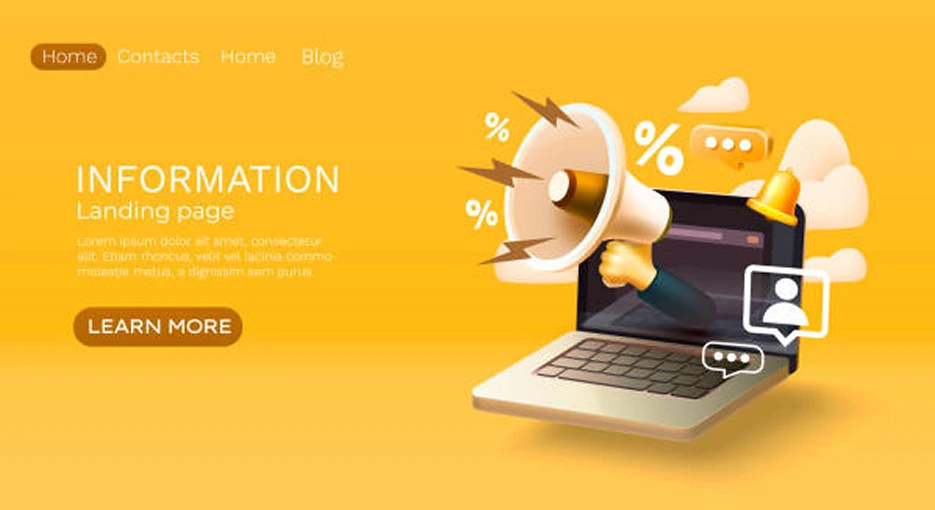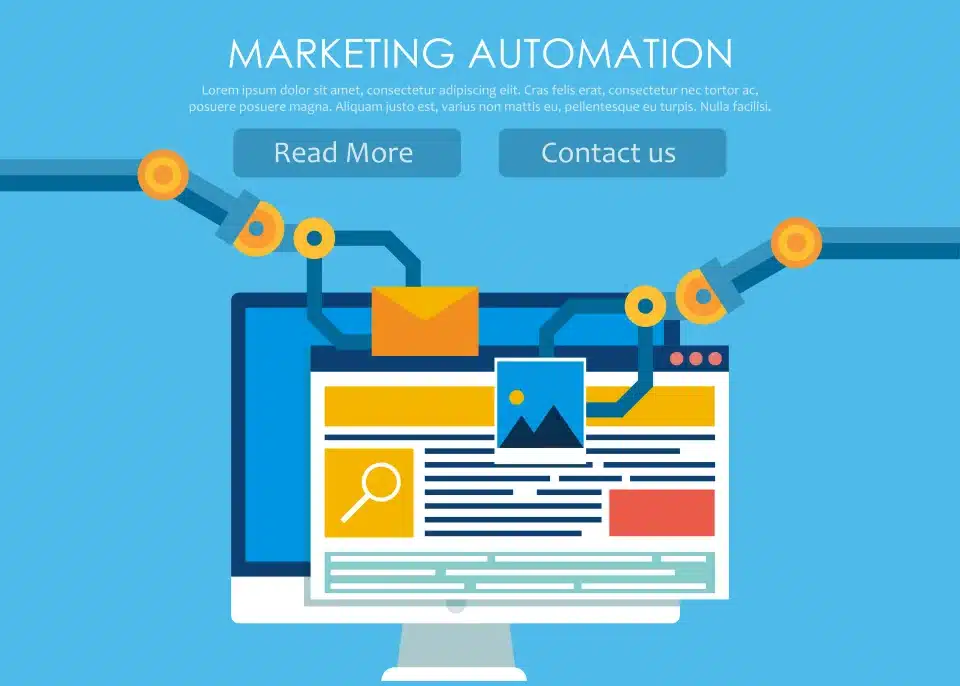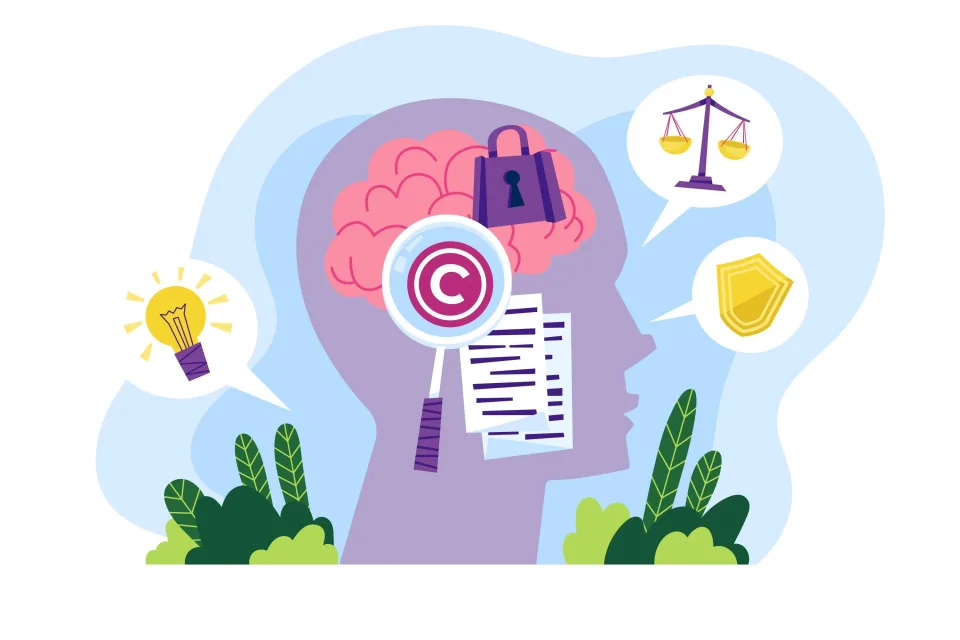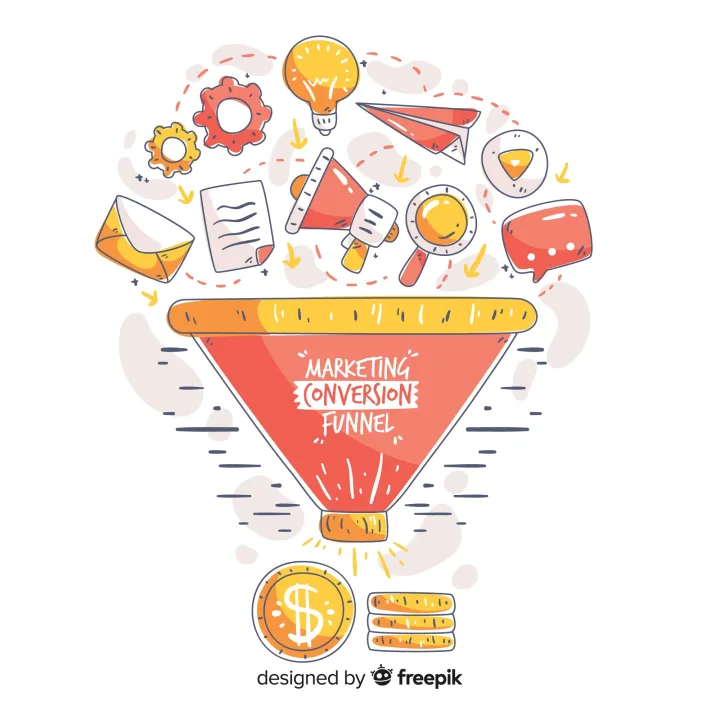
Why the Funnel Still Matters in Modern Marketing
Currently, the boom around new tools, tactics, and trends in digital marketing, one concept still stands strong: the marketing funnel.
Why? Because even if you’re selling software, services, or skincare, the customer journey hasn’t changed as much as we think. People still move from not knowing you exist to trusting you enough to buy, and they don’t do it in one click; it’s a process.
We’ve to understand that the content marketing funnel isn’t just a marketing theory. It’s a practical framework that helps you:
- Creating the right content at the right time
- Building trust before asking for the sale
- Improving your return on investment (ROI)
- Turning leads into loyal customers
Here we’ll give you a guide that breaks down exactly how to plan content across all stages: TOFU, MOFU, and BOFU, all with examples, CTAs, and the metrics you should track at every stage
What Is a Marketing Funnel and How It Works
Definition of a Marketing Funnel
A marketing funnel is a model that maps the phases people go through to discover your brand until they become paying customers (and beyond). The name comes from the shape: wide at the top, narrow at the bottom.
Each stage of the funnel corresponds to a different level of awareness and intent:
- Top of Funnel (TOFU) – Awareness: People realize they have a problem.
- Middle of Funnel (MOFU) – Consideration: They’re looking at options.
- Bottom of Funnel (BOFU) – Conversion: They’re ready to make decisions.
This structure helps marketers create focused, goal-driven content at every stage.
The Psychology Behind the Funnel
So, we can say that the conversion funnel marketing focuses on how humans make decisions. People don’t jump from stranger to buyer instantly; they need information, validation, and trust.
The funnel helps you deliver: answers, proof, and confidence, all of this in the right order.

Funnel vs Flywheel (Briefly)
Some marketers prefer the flywheel model, this model emphasizes retention and loyalty. But it doesn’t replace the funnel; it just continues the journey. In fact, if you want to make good strategies, you must use both the marketing and sales funnel and retention-focused tactics for long-term growth.
The Digital Marketing Funnel Today
As we know, everything is changing. Modern funnels live across multiple platforms: your website, email inbox, Instagram feed, YouTube channel, and beyond, now, you have to be strategic, and a well-executed digital marketing funnel considers all these touchpoints, using data to guide leads through with no problems.
The Stages of the Funnel (TOFU, MOFU, BOFU)
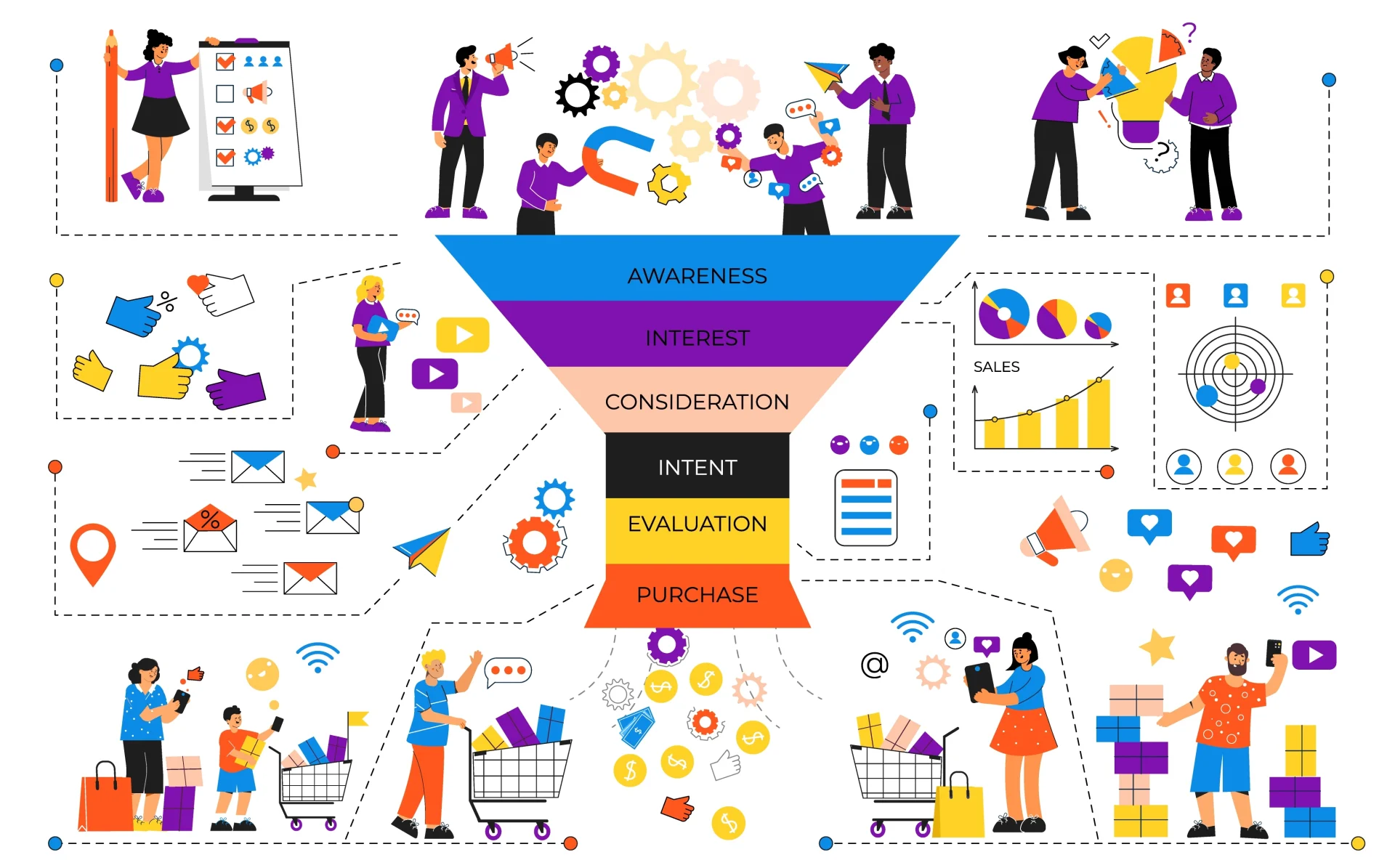
Top of Funnel (TOFU): Awareness Stage
Here you have to: get noticed. Some people at this stage might not even know they have a problem, or that a solution like yours exists. So your content should educate, entertain, or inspire curiosity.
This is your top funnel marketing moment.
TOFU audience questions:
- “Why am I struggling with this?”
- “Is there a better way?”
Middle of Funnel (MOFU): Consideration Stage
Now your audience is aware of the problem, and they’re actively exploring solutions. So, your job is building trust and positioning your brand as one worth considering.
This is where middle-of-funnel content ideas shine.
MOFU audience questions:
- “Who offers what I need?”
- “Can I trust this company?”
- “What makes them different?”
Bottom of Funnel (BOFU): Conversion Stage
At this stage, your audience knows that they have a problem; they’ve done the research. Now they need one last push to take action.
BOFU content helps to remove doubt and create urgency.
BOFU audience questions:
- “How does this work?”
- “Can I see proof?”
- “Why now?”
Funnel Marketing vs Content Marketing Funnel
Although the content marketing funnel refers specifically to content types at each stage, a full funnel marketing strategy includes paid ads, SEO, landing pages, emails, and CRM, all aligned with the funnel.
You have to put all of this together, and the result will form the inbound marketing funnel that attracts, engages, and converts leads holistically.
Content Strategies for Each Funnel Stage
To better understand, let’s break it down by TOFU, MOFU, and BOFU, complete with content examples, suggested CTAs, and key metrics.
TOFU: Attract with Valuable Content
Here, you have to generate awareness and drive traffic. At this stage, you have to think helpfully and forget salesy thinking; you have to create content that answers questions, solves problems, or introduces new ideas.
Examples:
- SEO-optimized blog posts (like this one)
- YouTube explainer videos (people are always looking for more information)
- Viral social media posts (on social media, people get distracted, but is here where you have to improve your creativity).
- Podcast episodes (Intro level)
CTAs for TOFU:
- “Read more”
- “Subscribe to our newsletter”
- “Follow us on Instagram”
TOFU Metrics:
- Website traffic
- Impressions
- CTR (Click-through rate)
- Social shares
- Video views
MOFU: Build Trust and Drive Consideration
Here, you give valuable content to the lead. The goal is to educate deeply, show authority, and offer value in exchange for contact info or attention.
Examples:
- Lead magnets (downloadable items like: ebooks or checklists)
- Webinars or virtual events (people want to know from experts)
- Case summaries or product comparisons
- Strategic e-mail marketing
CTAs for MOFU:
- “Download the free guide”
- “Get access now”
- “Learn more about how it works.”
MOFU Metrics:
- Email open and click rates
- Lead magnet downloads
- Form submissions
- Time on site
- Webinar attendance
BOFU: Convert with Proof and Urgency
This is your closing content—BOFU content answers final objections and makes decision-making feel easy and obvious.
Examples:
- Detailed case studies
- Customer testimonials
- Product demos or free trials
- Pricing pages with FAQs
CTAs for BOFU:
- “Book a free consultation”
- “Start your free trial”
- “See pricing”
BOFU Metrics:
- Conversion rate
- Sales-qualified leads (SQLs)
- Revenue attribution
- Trial signups or demo bookings
How to Build a Full Funnel Marketing Strategy
Ready to bring it all together? Here’s how to create a full funnel marketing strategy that works:
Align Content and Offers to Funnel Stages
You have to know how your existing content is working, so you have to audit it and categorize it by stage. Then identify the gaps.
Ask:
- Do we have enough TOFU content to drive awareness?
- Are we nurturing leads in the middle?
- What’s pushing people to buy at the bottom?
Build CTAs for every stage of the marketing funnel, and make sure each piece of content logically leads to the next step.
Integrate CRM and Automation
You can use tools like HubSpot, ActiveCampaign, or Mailchimp to:
- Tag leads by funnel stage
- Send MOFU content after a TOFU blog is read
- Trigger BOFU offers when someone clicks a pricing link
This is how you guide leads through the funnel at scale, without spamming or overwhelming them. People want solutions, not problems.
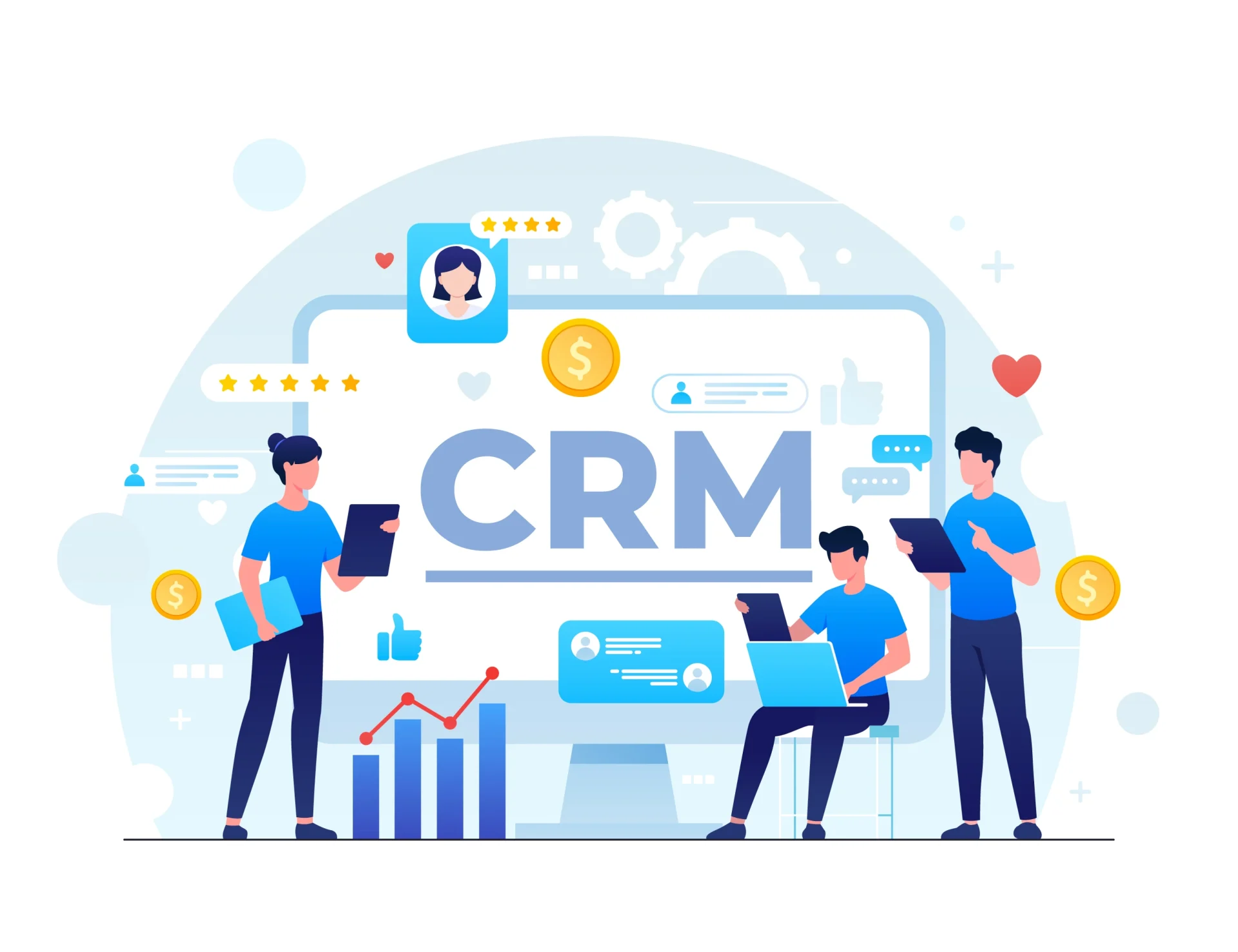
Use Analytics to Refine Funnel Performance
Every stage must have defined metrics (as shown above). You have to track performance and optimize monthly.
Key tools:
- Google Analytics (traffic + conversions)
- Hotjar or Clarity (behavior insights)
- CRM reports (pipeline stages, email performance)
- A/B testing tools for CTAs and landing pages
Funnel Optimization: Best Practices and Tools
A/B Testing CTAs by Funnel Stage
Remember that one CTA doesn’t work everywhere. You have to test different versions based on where the user is in their journey.
Examples:
- TOFU: “Explore the blog” vs “Get tips weekly”
- MOFU: “Download now” vs “Join the free webinar”
- BOFU: “Book a demo” vs “Get custom pricing”
Use Templates and Diagrams to Visualize
If you have a visual of your funnel, your team will be aligned. Use funnel templates tools like Notion, Figma, or Miro to plan content flow.
It also makes presenting strategies to stakeholders easier.
Common Mistakes to Avoid
- Sending conversion offers too early (BOFU at TOFU = no good)
- Only creating content for one stage, your strategy must cover all stages
- Forgetting to follow up after conversion
- Neglecting data and user behavior
Content that converts is content with context; always meet your leads where they are.
Conclusion: Don’t Just Create Content—Guide the Journey
Content alone won’t convert. But content aligned to a clear funnel strategy? That’s how you move people from clicks to loyal customers.
Let’s recap:
-The marketing funnel scans the buyer journey
-TOFU, MOFU, BOFU content serves a purpose at each stage
-Great CTAs and metrics keep your funnel functional
-Strategy + automation = full funnel success
Want help building your own content-driven funnel?
Reach out to Stremeline. We don’t just make content, we build journeys that convert.
Need help optimizing your content marketing funnel?
Let’s design a full funnel strategy that attracts, nurtures, and converts, all of this without the guesswork.

